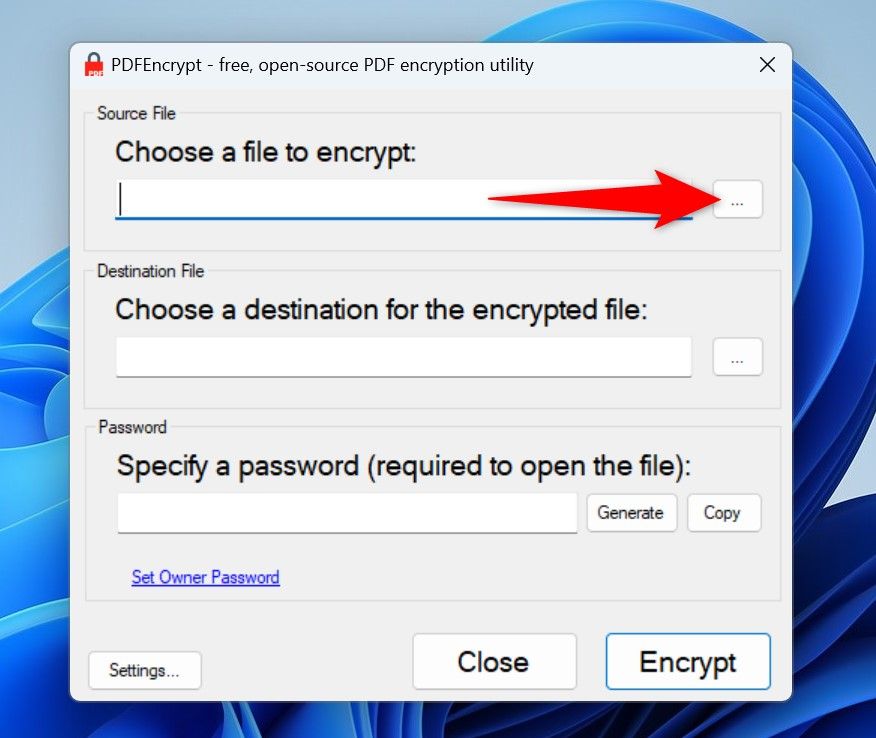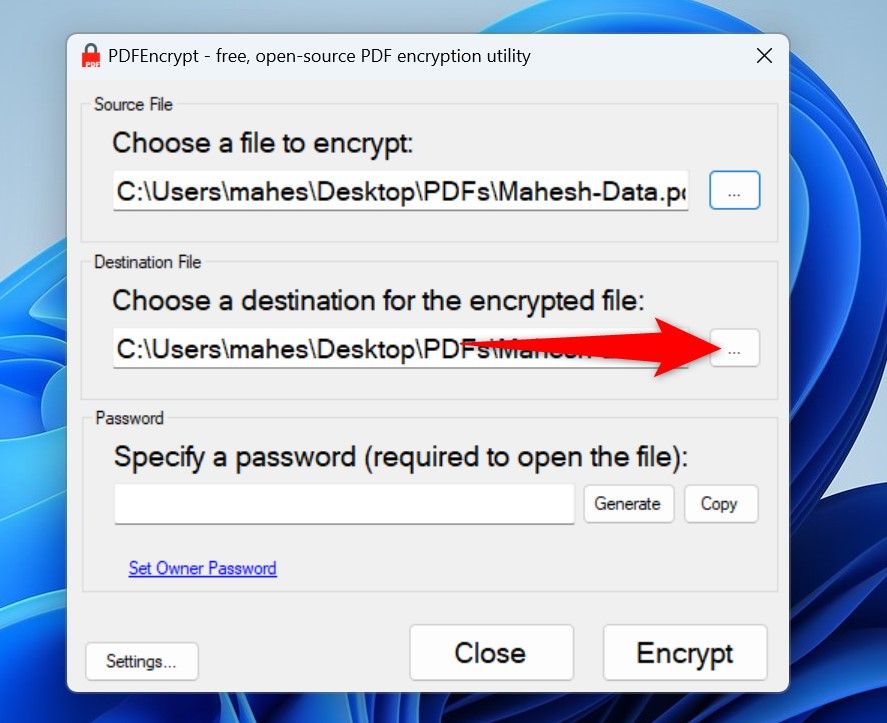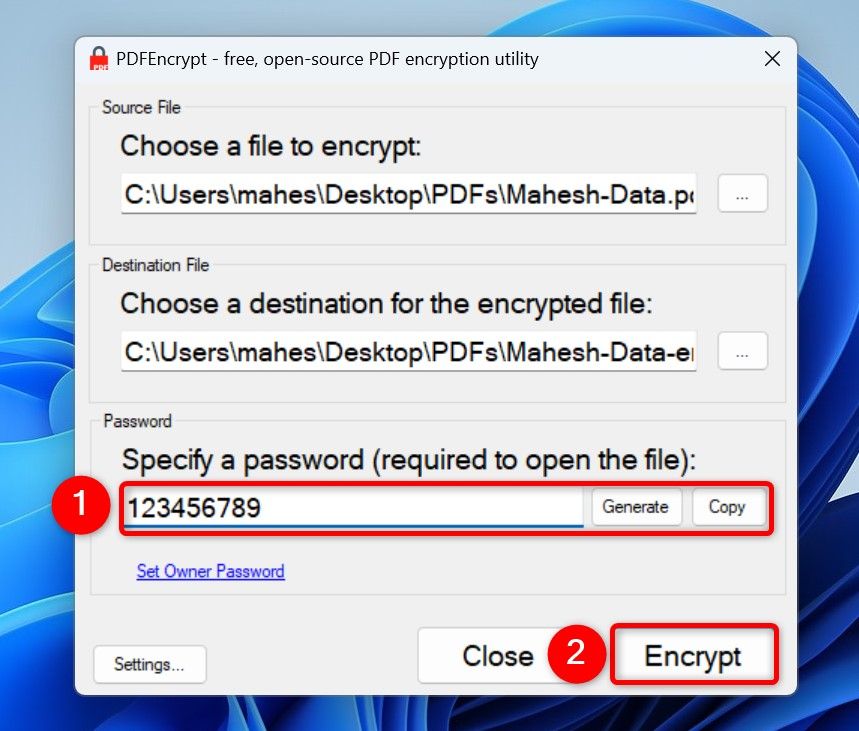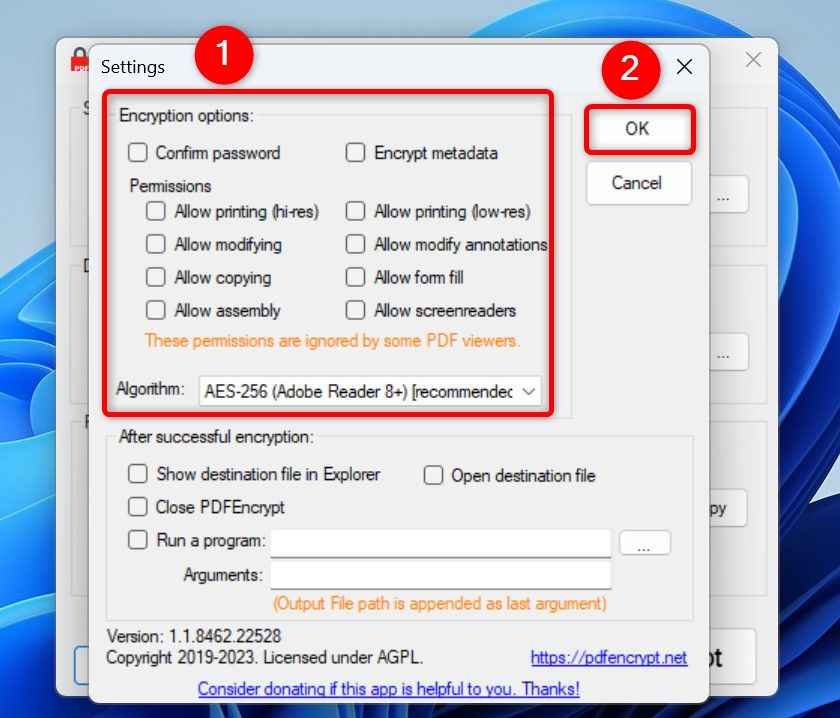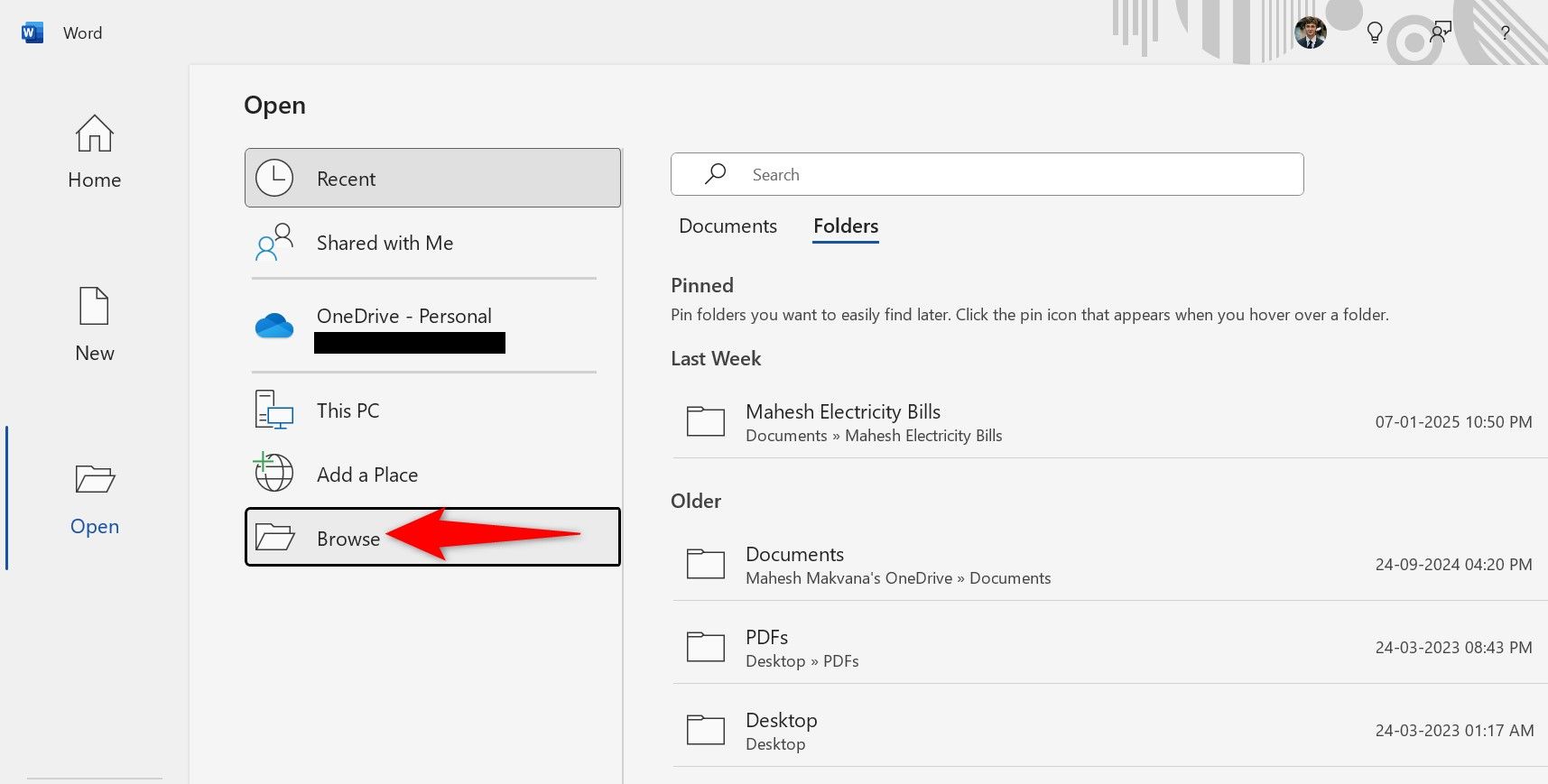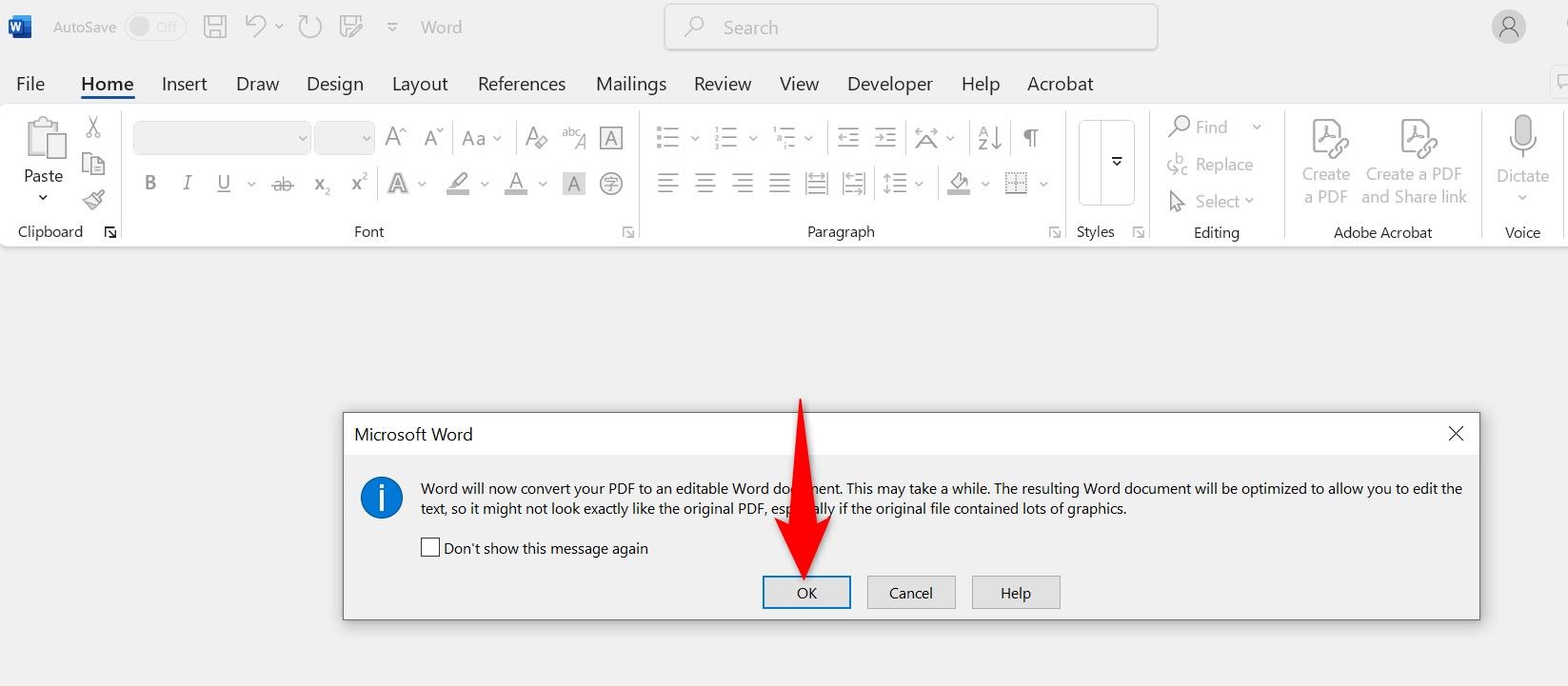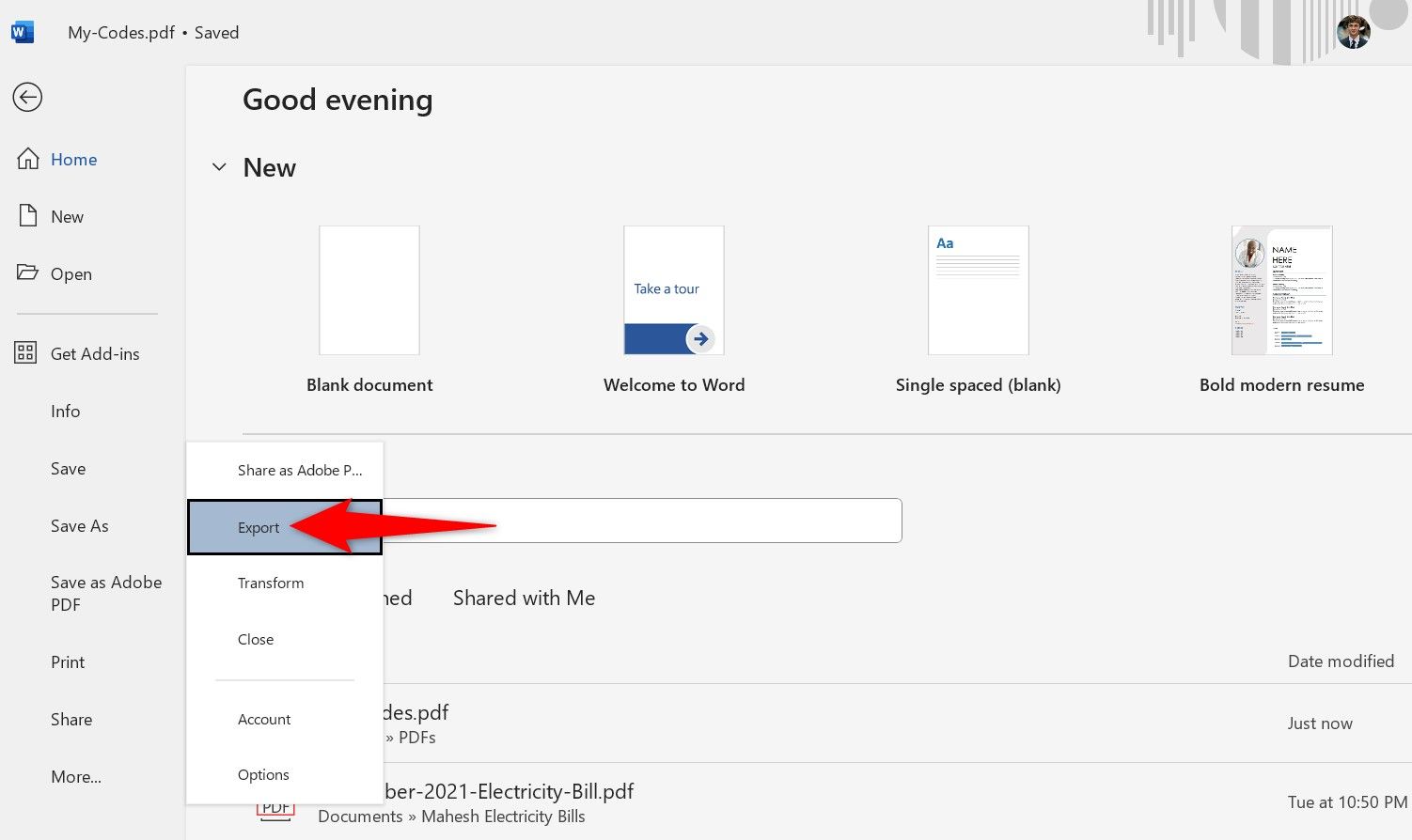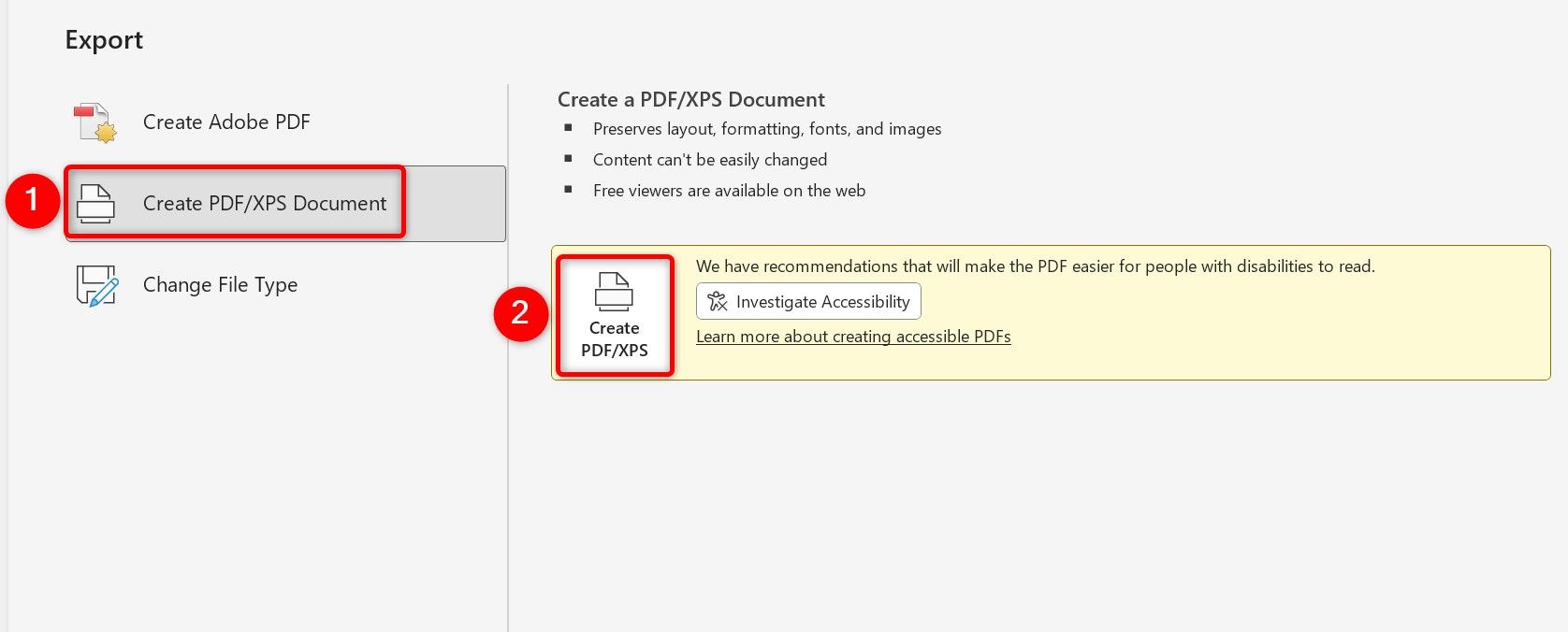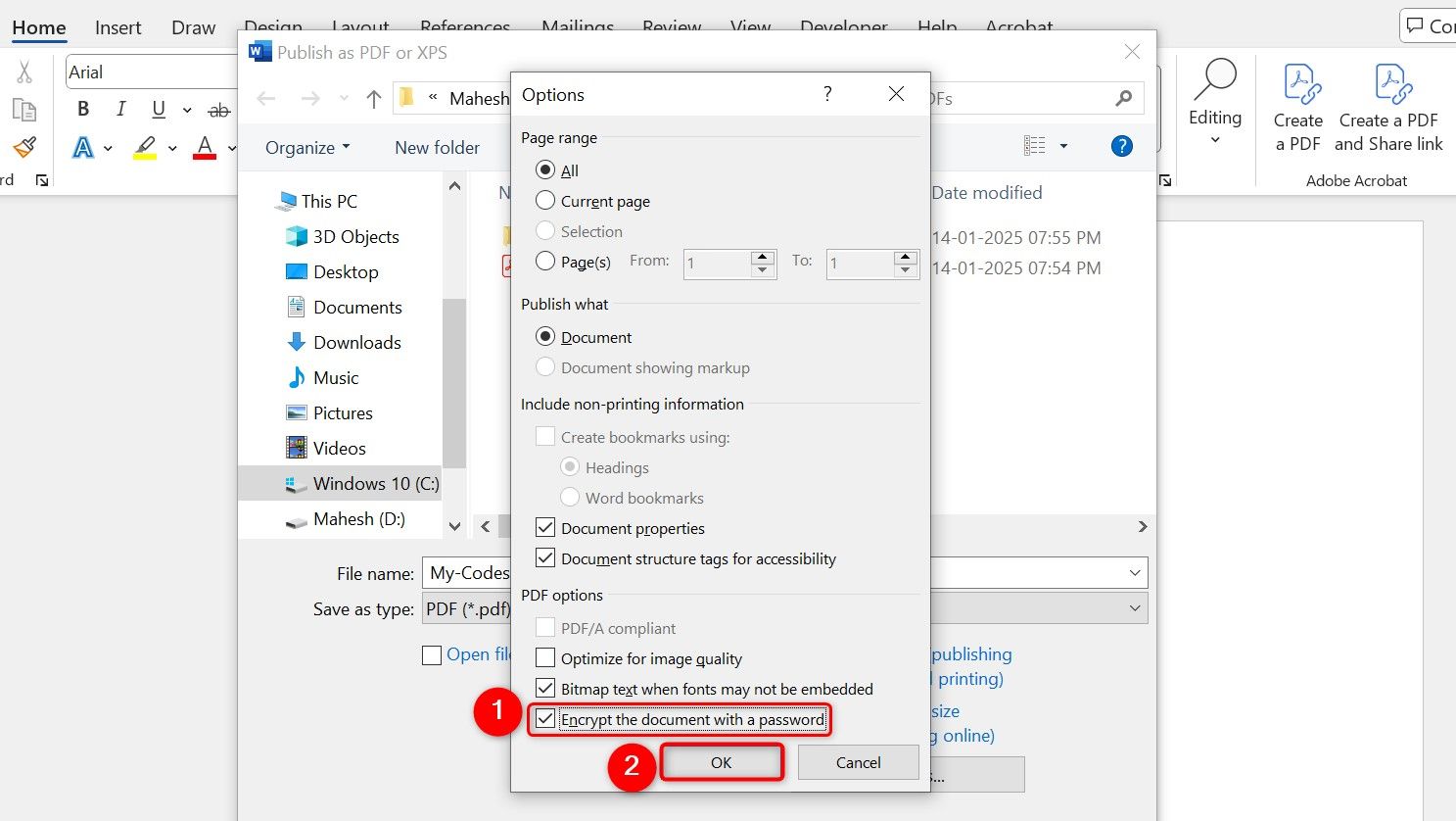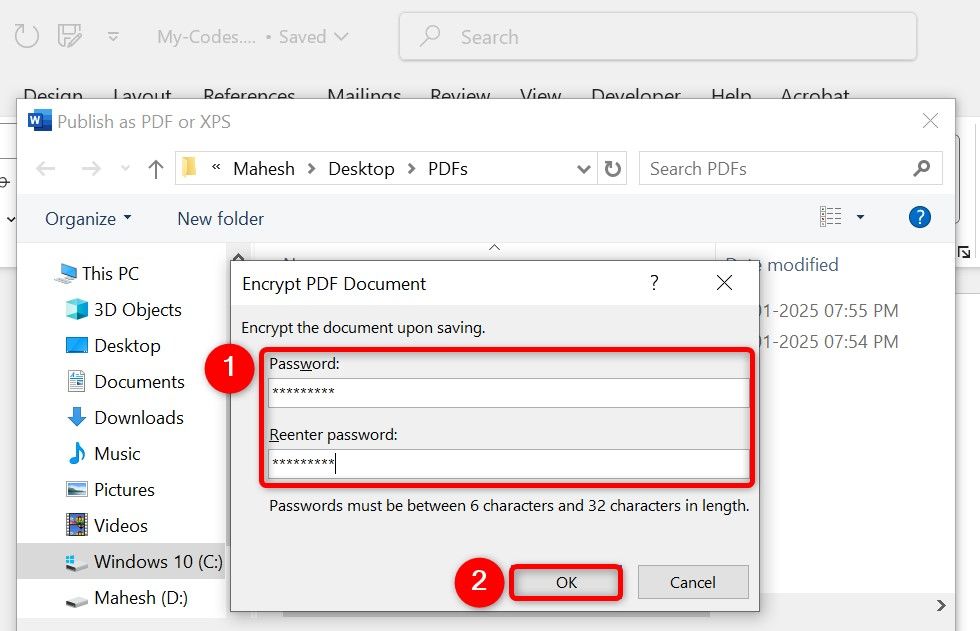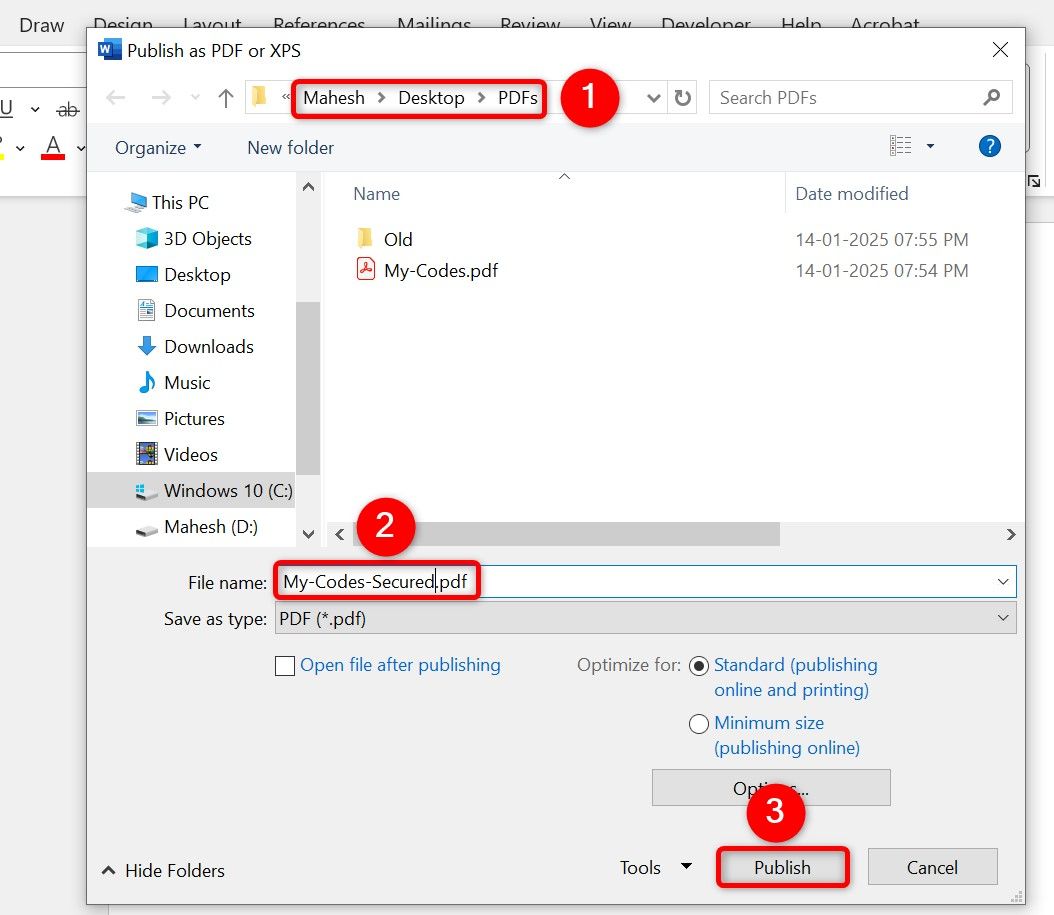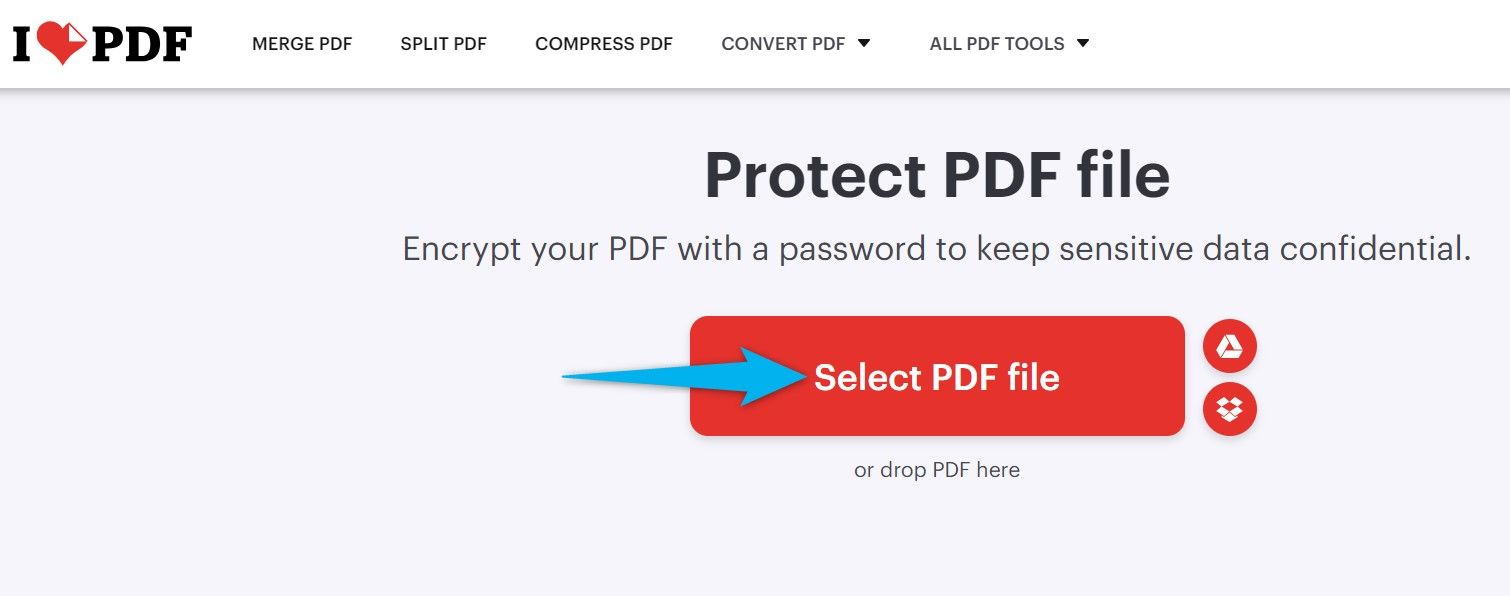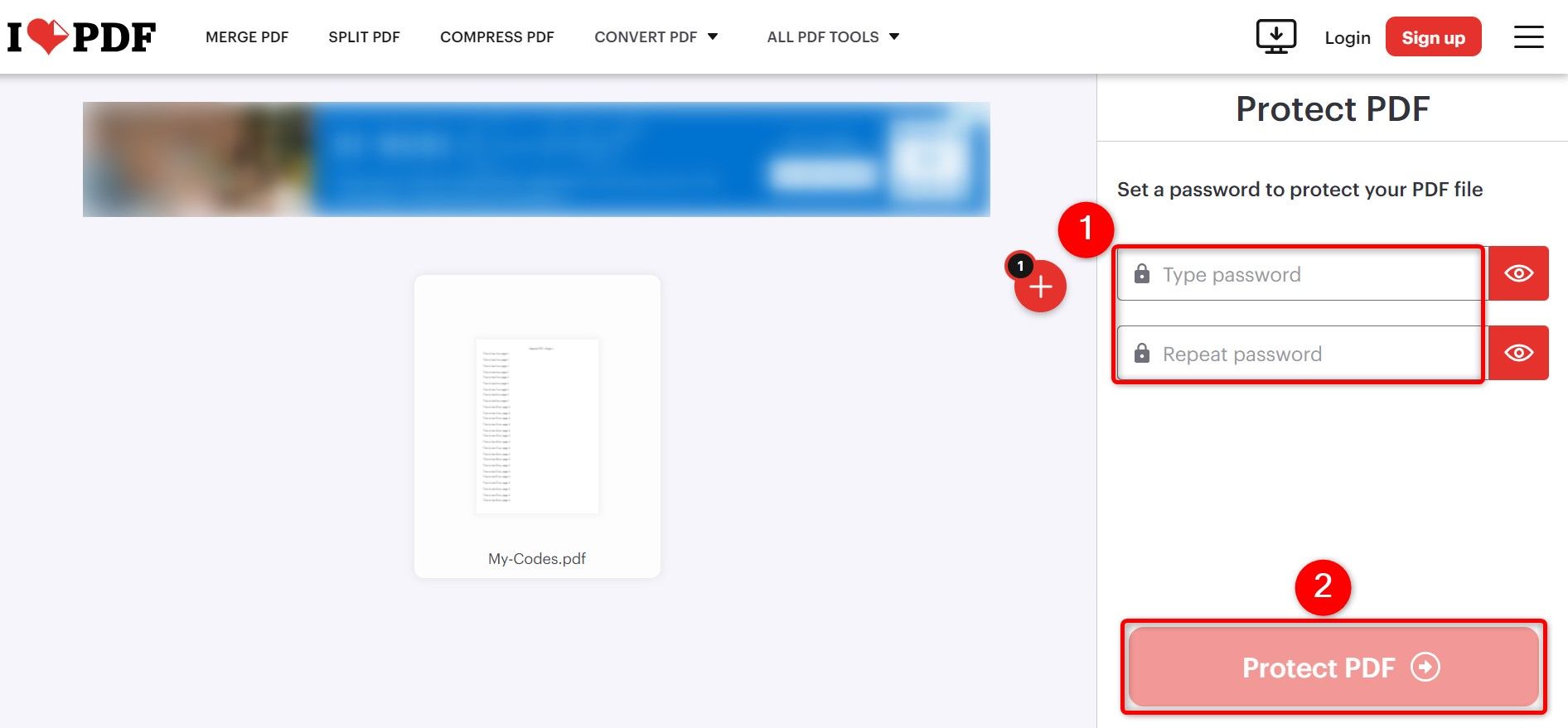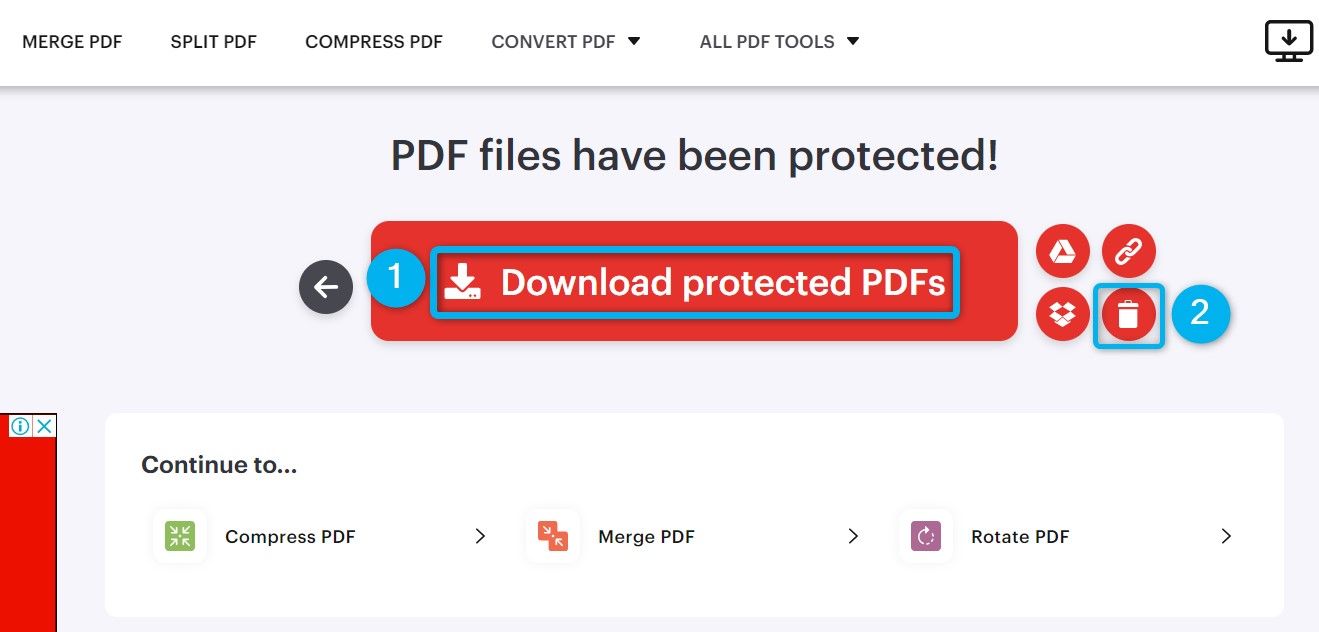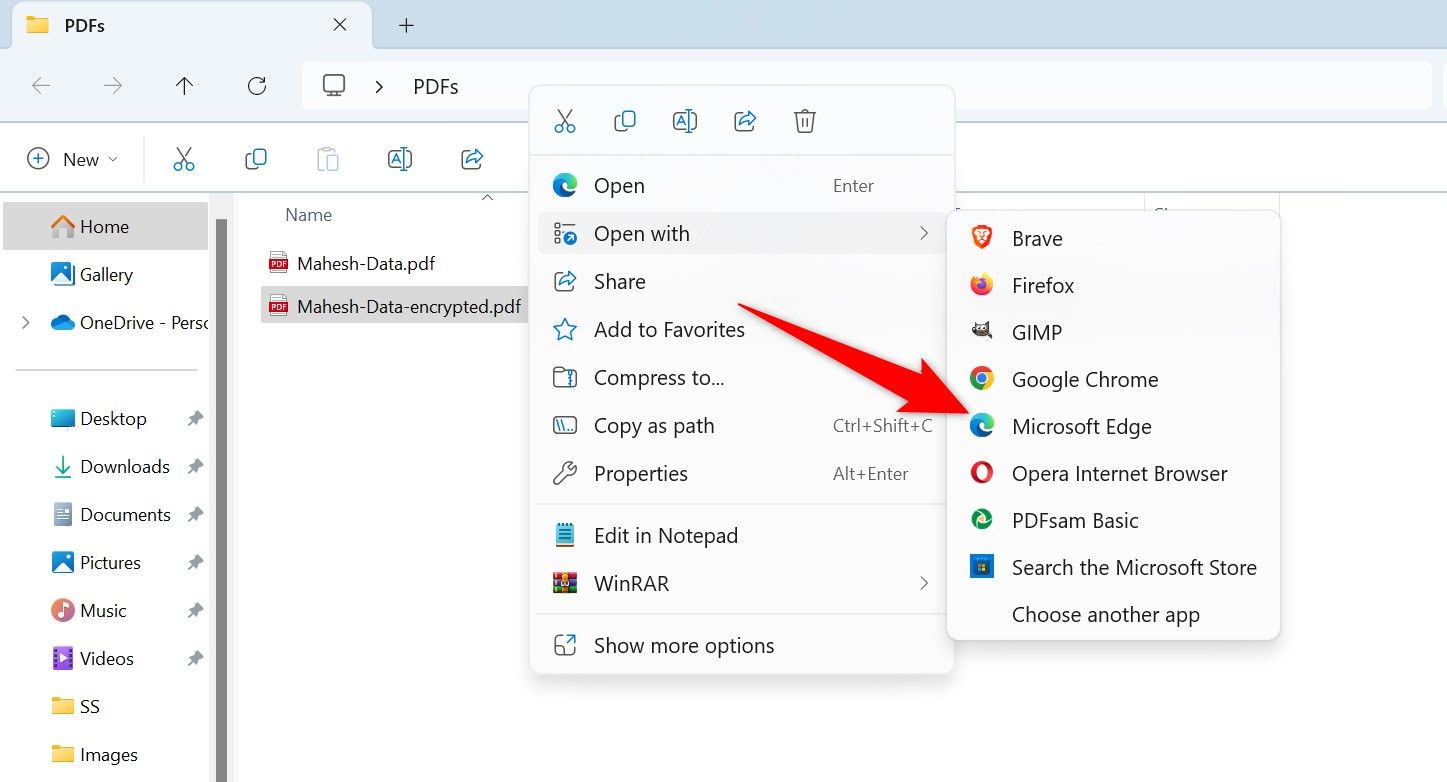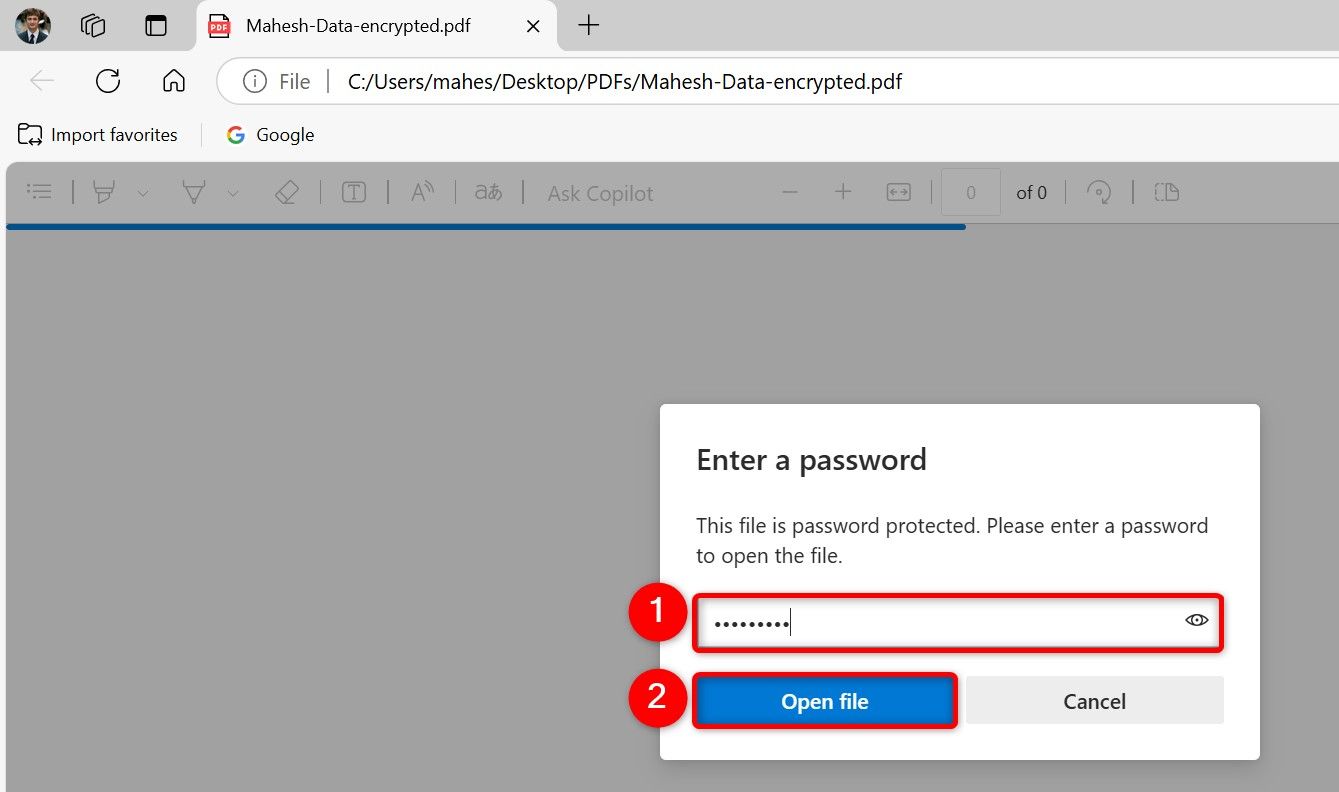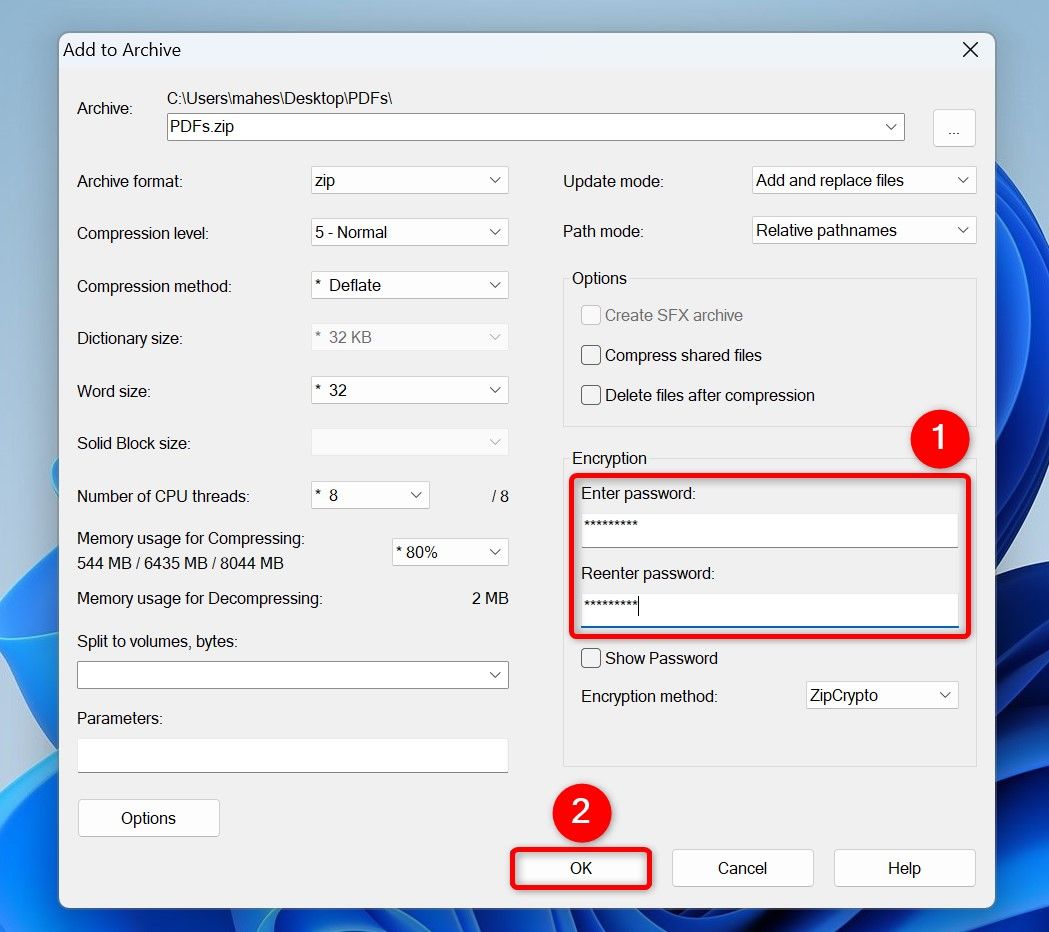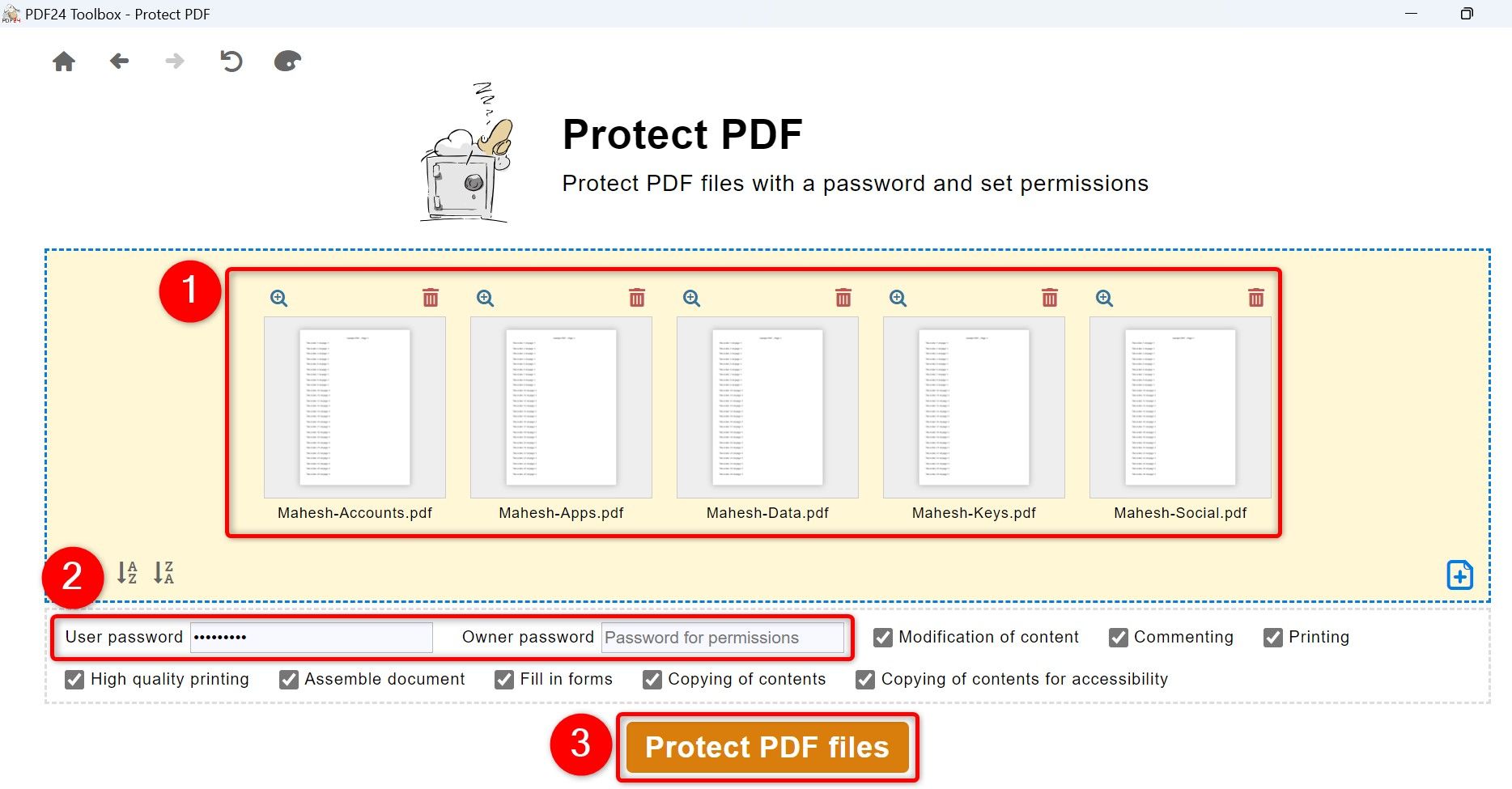If you have a confidential PDF you want to password protect, you have a few ways to do that on your Windows 11 PC. You can use a desktop app or a web-based tool to encrypt your PDF files.
Windows 11 doesn’t have a built-in feature for adding password protection to PDFs. You’ll have to use a third-party solution to accomplish the task.
Add Password-Protection to a PDF Using a Free App
The easiest way to password-protect a PDF is to use one of the many free PDF editing apps. One such app is PDFEncrypt, which is free and open-source and helps you encrypt your PDF files.
To use it, launch the PDFEncrypt site and download and install the app on your PC. Launch the app. On the main interface, in the Source File section, click the three dots and choose the PDF you want to protect.
In the Destination File section, click the three dots and choose the folder in which you want to save the resulting password-protected PDF.
In the Password section, click the text field and type the password you’d like to use. If you want the app to create a random password, click the “Generate” button. Then, click “Copy” to copy that password to your clipboard.
Then, choose “Encrypt” to start encrypting your PDF.
PDFEncrypt offers several customizations to encrypt PDFs. To view those options, on the app’s main interface, click “Settings.” On the open window, you can choose to encrypt metadata, select what permissions to allow and deny, what algorithms to use to encrypt the files, what to do after a file is encrypted, and so on.
If you make a change, make sure to click “OK” to save the change.
Encrypt a PDF Using Microsoft Word
If you’ve installed Microsoft Word on your PC, you can use that word processor to add password protection to PDFs. Note that this method works best for PDF files that aren’t highly formatted. If your PDF has a lot of formatting, consider using one of the other methods.
Launch Windows Search (press Windows+S), type Word, and open the app. From Word’s left sidebar, select Open > Browse. Navigate to the folder containing the PDF and double-click the file to open it with Word.
Word will display a warning saying that your PDF will be optimized to work with the Word app and there might be layout issues. Accept it by clicking “OK.”
The PDF is now open in Word. To add password protection, click “File” in the top-left corner of Word. From the left sidebar, choose More > Export.
On the left, click “Create PDF/XPS Document.” On the right, choose “Create PDF/XPS.”
On the Publish as PDF or XPS window, click the “Options” button. At the bottom of the open window, enable the “Encrypt the Document With a Password” option and choose “OK.”
On the Encrypt PDF Document window, click the “Password” field and type the password you’d like to use. Click the “Reenter Password” field and type the same password. Then, click “OK.”
Select the folder to save the encrypted PDF in. Click the “File Name” field and type a name for the file. Then, choose “Publish.”
If you don’t want to use an app to encrypt a PDF, use one of the many web-based PDF editing tools. Some tools you can use are Adobe Acrobat (online), iLovePDF, and Smallpdf.
If your PDF contains sensitive information, I don’t recommend using online PDF editing tools for privacy reasons. In this case, use one of the other offline methods.
To use the iLovePDF tool, launch its site. Click “Select PDF File” and choose the PDF you want to encrypt.
After the PDF is uploaded, click the “Type Password” field and type the password you want to use. Select the “Repeat Password” field and re-type the same password. Then, choose “Protect PDF.”
When the PDF is encrypted, click “Download Protected PDFs” to save the PDF to your computer. Then, click “Delete It Now” (the trash can icon) to remove the file from the site’s servers.
How to Open a Password-Protected PDF File
To check if your PDF is indeed password-protected, open it with any PDF viewer, and it will prompt you to enter a password.
To do that, launch File Explorer and find your encrypted PDF. Right-click the file and choose Open With > Microsoft Edge. Feel free to use any other PDF viewer.
In Edge, on the Enter a Password dialog box, click the text field and type the PDF password. Then, choose “Open File” or press Enter.
Bonus: How to Bulk-Add Password Protection to PDF Files
If you want to add password protection to multiple PDFs at once, you’ll have to use a different method.
One way to do that is to create an archive containing your multiple PDF files and password-protect that archive. To do that, download and install the free and open-source 7-Zip app on your PC. Then, restart your Windows 11 PC.
Bring your multiple PDF files into a single folder. Select all your files, right-click a chosen file, and choose Show More Options > 7-Zip > Add to Archive. On the window that opens, click the “Enter Password” field and type a password. Select the “Reenter Password” field and re-type the same password. Then, click “OK.”
Another way is to use an app that offers the option to bulk encrypt PDF files. One such free app is PDF24. Download and install the PDF24 app on your PC. Run the app, select “Protect PDF,” click “Choose Files,” and add all the PDFs to encrypt. Click the “User Password” field and type a password. Optionally, type a password in the “Owner Password” field. Then, choose “Protect PDF Files.”
Select “Save” and choose the folder in which you want to save the password-protected PDFs.
And that’s how you protect sensitive PDF files on your Windows 11 computer. Later, it’s totally possible to remove the password from your PDF files.

